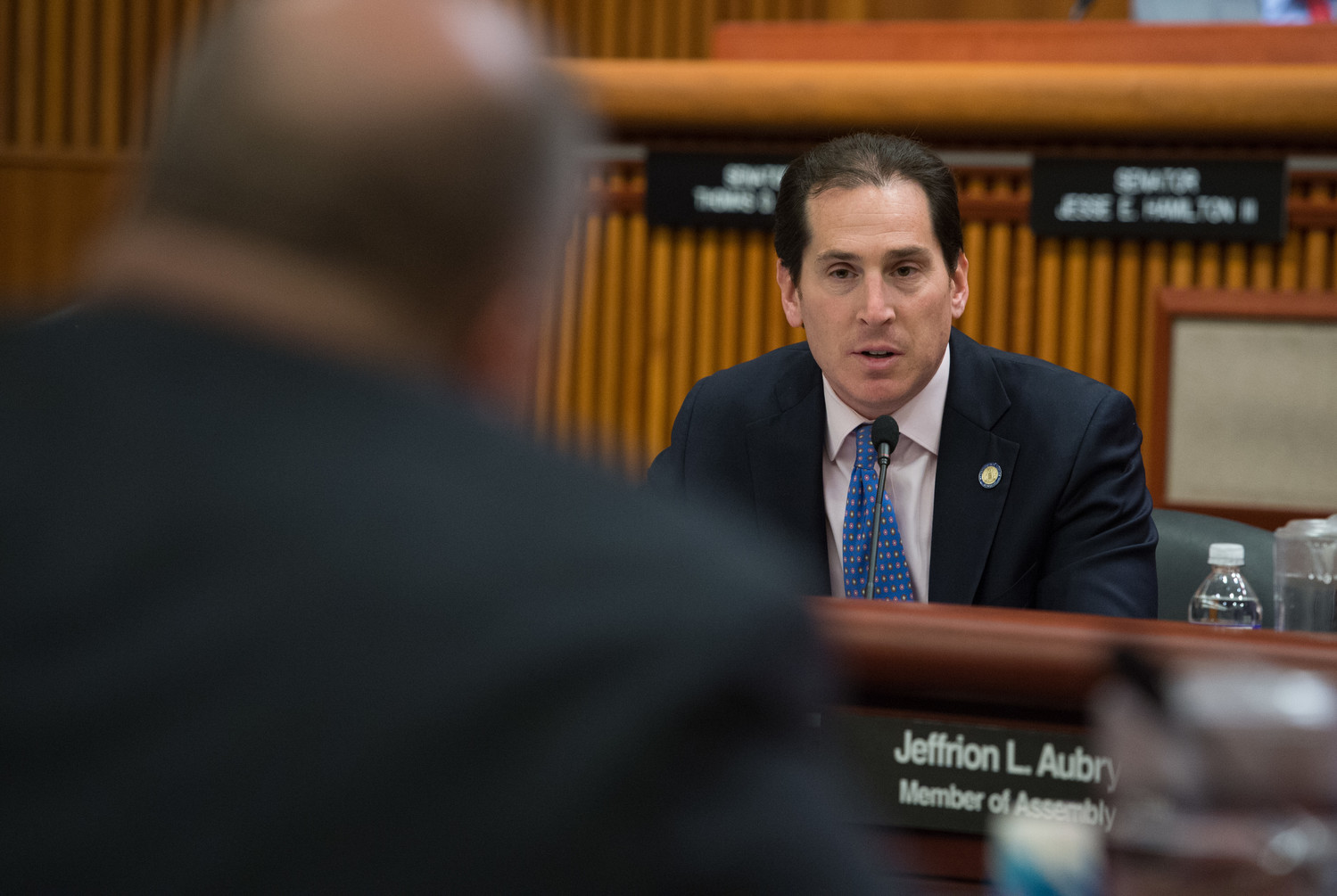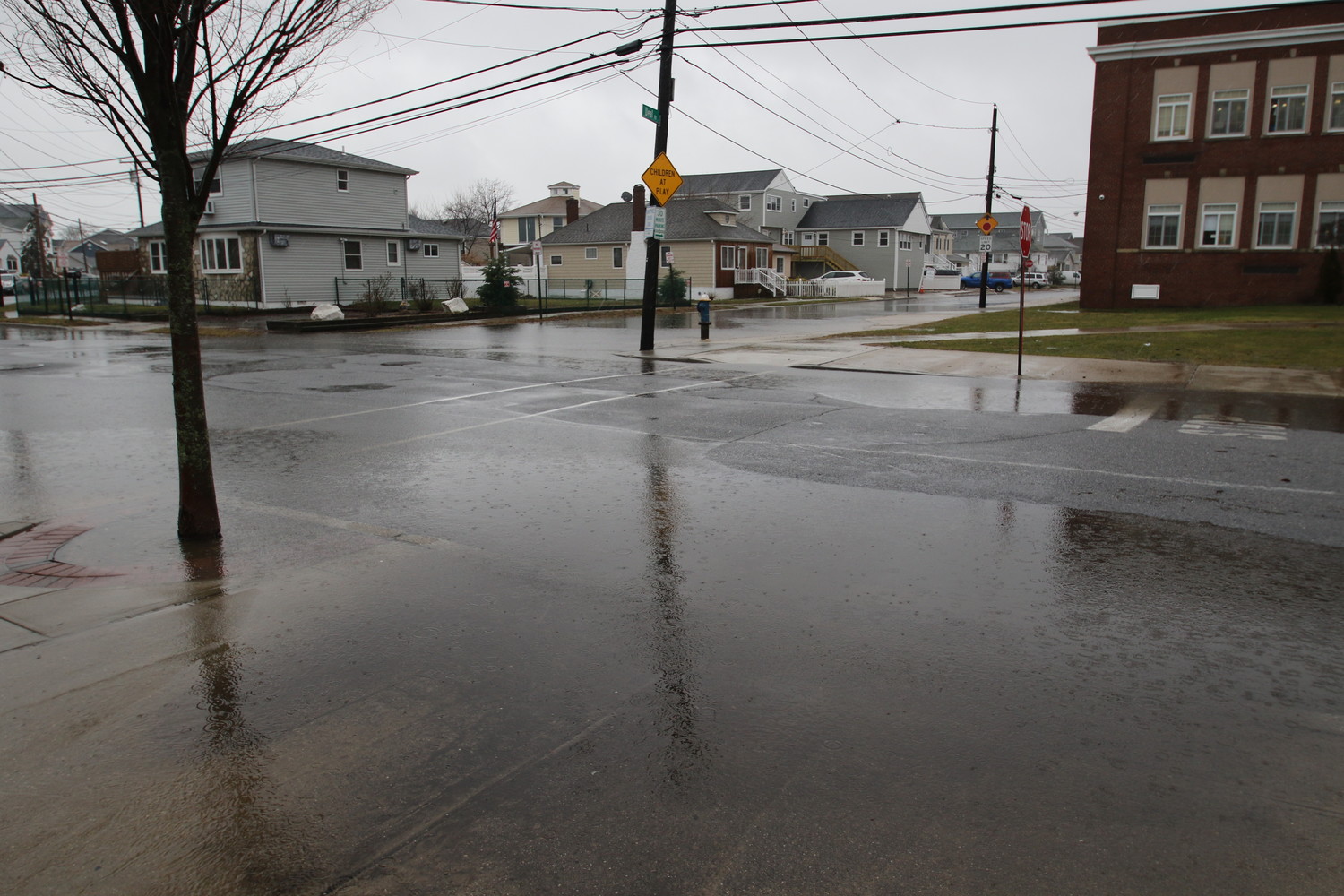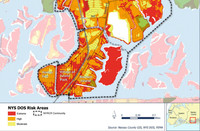State official questions progress on Island Park state drainage project

It all depends on the moon tide.
There are days when, between 6 a.m. and 7 a.m. — just as children are on their way to school in Island Park — the water comes up to the entrance of Francis Hegarty Elementary.
“When you have to start changing procedures, coming and leaving through certain doors, being picked up at different locations, you’re altering their day-to-day routine,” Island Park Board of Education President Jack Vobis said of the disruptions students experience because of the flooding. “That has to jar something inside them that something’s not normal.”
The solution, officials have said, is a three-part, $40 million storm hazard mitigation project funded by the Federal Emergency Management Agency and administered through the state Division of Homeland Security and Emergency Services, which includes an overhaul of portions of village’s storm drain system and municipal bulkheads.
Officials at the county, town, state and school levels expressed hope that after a tour by recently appointed DHSES Commissioner Roger Parrino in July that there would be some movement on the project. “Hopefully [it will] cut through the bureaucracy and red tape,” Vobis told the Herald last summer.
But six months after the tour, and the completion of an initial study in the fall of 2016, there appears to have been little progress, prompting State Sen. Todd Kaminsky to press Parrino on the Senate floor on Jan. 31.
“As we are now, more than five years, coming up to the sixth anniversary of Sandy,” Kaminsky said. “ … The $40 million FEMA program that your agency oversees has not been seen in action.”
Parrino replied that the reason for the delay was a cost-benefit analysis from the Village of Island Park that his department needed, which he said, “We got [from] the village as recently as I believe late December and the middle of January.”
Island Park Mayor Michael McGinty told the Herald that there had been a back-and-forth of paperwork between his office and DHSES from September until now. At the Oct. 19 village board meeting, he told residents that Parrino had received all of the required documents and that “Homeland Security is pushing forward with its due diligence.” A month later, McGinty said, “We’ll be hearing from him shortly.”
But in December, he announced that as part of a FEMA-mandated cost-benefit analysis, the village would have to answer 12 additional questions. “We’ve provided voluminous, substantial additional documentation for the cost-benefit analysis,” McGinty later told the Herald.
Kristen Devoe, a spokeswoman for DHSES, said in an emailed statement that her department had received the report from the village, and that “because cost effectiveness is a FEMA program requirement, we are working with Island Park to collect and provide additional supporting materials.
“Once the cost-effectiveness requirements of phase one are solidly documented,” Devoe continued, “FEMA can issue its approval for Phase Two.”
The first stage of the project involved an exploration and cleaning of the storm drains around Hegarty Elementary as well as Suffolk Road. McGinty reported that the first stage, carried out over the summer of 2016, came in roughly $1.1 under budget, allowing the funds to carry over to the next phase.
The second portion of the project would include an engineering study costing up to $3.8 million to create a design for construction, but this still awaits FEMA approval until the correct documentation is received.
Beyond exploration and studies, the projects planned through the FEMA grant would include storm drain renovations, road elevations and retaining wall enhancements, which are intended to provide flood protection for major infrastructure in the village, according to Devoe.
McGinty said this summer that the construction would potentially feature the expansion of lateral storm drain pipes along Suffolk and around Hegarty from six to 15 or 18 inch diameters, as well as the installation of larger storm drain basins. The goal, he said, is to increase the system’s storm water capacity from roughly 34 cubic feet to around 189 cubic feet per 100 feet of pipe. Additionally, the planned replacement of tidal flex valves would prevent seawater from re-entering the system during high tide.
The project is separate from the Governor’s Office of Storm Recovery’s Community Reconstruction Program, which, also using FEMA funds, has roughly $9 million earmarked for storm resiliency projects in Island Park that include a storm-hardened second floor for the village firehouse, a transit-oriented development project on Long Beach Road and drainage improvements for the unincorporated Harbor and Barnum islands.
Although Sandy-related repairs to Hegarty are largely complete, as the DHSES project continues to hit bureaucratic snags, students will still contend with disruptions caused by the periodic flooding. “It’s become a way of life,” Vobis said. “But it really doesn’t have to be.”









